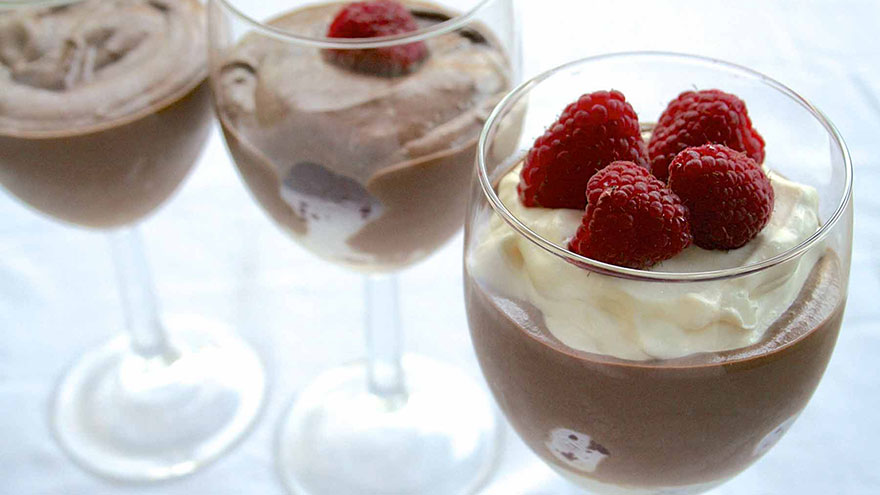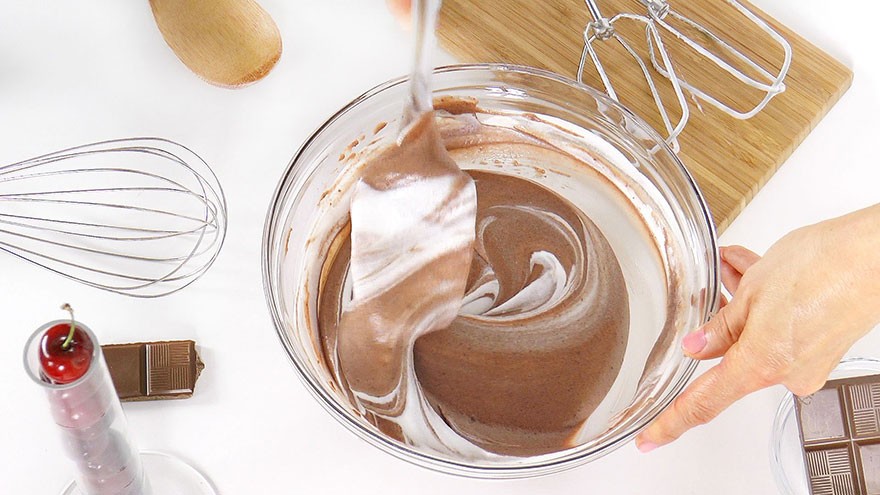Secrets for Making Marvelous Mousse
A favorite gourmet dessert, mousse has a reputation for being difficult to make. In French, “mousse” (pronounced “moose”) means foam. And that light, airy, foamy texture is exactly what makes mousse so delicious—and so tricky to prepare, unless you know a few secrets.
Although there are many types of mousse, chocolate mousse is perhaps the most popular. For this dessert, all you need is about ten minutes cooking time and two main ingredients: chocolate and eggs.
Eggs
Traditional mousse is made with uncooked egg white. However, since there’s a small chance of getting salmonella poisoning from raw egg, some recipes replace the egg with whipped cream.
This is the simplest type of mousse to create, although it doesn’t taste quite the same. It should also be noted that egg whites are less likely than egg yellows to carry salmonella.
Nonetheless, if you want to stick with classic mousse, just be sure to purchase and use pasteurized eggs.
Bain Marie
In most chocolate mousse recipes, a technique called bain marie (beyn-muh-ree), or a water bath, is used to melt the chocolate. This requires slowly melting the chocolate in a double boiler or in a metal bowl placed over a saucepan with water simmering inside it.
This process creates smooth, creamy chocolate.

Separating Eggs
Traditional mousse calls for beating egg whites until they have soft peaks. To separate the white part of the egg from the yellow part, you don’t need a special kitchen gadget. All you really need is two bowls: One to capture the white and one to capture the yellow.
Begin by cracking one egg. Hold the egg upright, so the crack runs horizontally across the middle of the egg. Carefully lift off the top egg shell and rock the shell contents back and forth until the white is entirely on one side of the shell and the yellow is on the other. Then pour the contents of each side of the shell into the appropriate bowl.
If the yolk breaks during the separation process, pour the entire contents into another bowl and save the egg for another meal. Use the broken egg within a day.
For the lightest, airiest results, don’t allow even a tiny amount of egg yolk to slip in with the whites.
Beating Egg Whites
One you’ve separated the egg whites, place them in a mixing bowl and begin beating them. You can do this by hand with a whisk, but it’s a lot of work; a hand held or standing electric mixer is a better choice. Every once in a while, stop the mixer and lift the beaters out of the bowl. When the egg whites begin “peaking,” they will try to cling to the mixer, resulting in mountain-like points.
Most mousse recipes call for “soft peaks,” which just means the tips fall a little when you remove the beaters. (“Stiff peaks” stay upright.)
Other Mousse Making Tips
Use well cleaned and dried bowls and beaters. Any impurities on your tools prevent the egg whites from peaking properly, which results in a heavy (rather than light) mousse.
Once you’ve beaten the eggs into soft peaks, you’ll need to fold them into the rest of the ingredients. This means you should slide a wooden spoon or plastic spatula along the bottom of the bowl and lift the contents up while keeping the spoon horizontal. If you try to stir the ingredients together, the eggs will loose all their air bubbles and the mousse won’t be light and airy.
Many mousses also call for dissolved sugar. Powdered sugar (sometimes called confectioners sugar) is the best choice.
After all the ingredients are mixed together, spoon the mousse into individual bowls. Cool in the refrigerator for at least an hour, but cover the bowls with plastic wrap so the mousse doesn’t take on the flavors of other foods in the fridge.

Any mousse made with raw egg should be eaten the same day it was prepared.
Check out the video version of this article on YouTube

